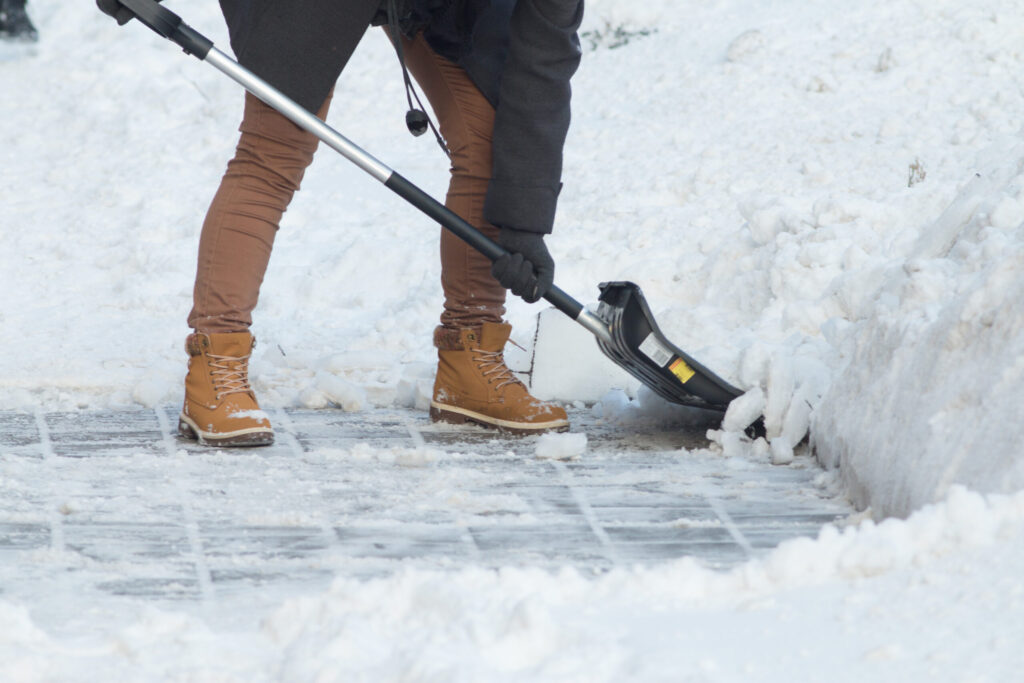Snow and Ice Removal Tips

Owners and managers of commercial property have an obligation to maintain safe conditions for employees and occupants. During the winter season, walkways, stairs, driveways, interior roadways and parking lots become slip and trip hazards as snow falls and ice forms. This is not only a safety hazard, it can also be an expensive legal issue for property owners, if an accident occurs.
To prevent injuries and minimize injury costs, commercial property owners should consider implementing a snow removal program using the bullet points below. The program should identify responsibilities, communication strategies, equipment used and follow-up procedures for snow removal. In addition, all of your actions (or the actions of a hired snow removal contractor) should be outlined in a snow and ice removal log. Periodically review your program to ensure that it is successfully working for your property and is minimizing the rate of injuries.
Pre-Season Procedures
Establish a plan for how you will remove snow and ice and who will do so. Also, identify when removal will take place in correspondence with when the snow falls (e.g., during a middle of the night snow fall, clean up should occur by 5 a.m.).
Place weather mats at all entrances to the building for a distance of 40 feet. These mats should be placed in both directions to catch snow and water when entering and exiting.
Check weather mats regularly to make sure they are in solid working condition and have not started to curl (this presents additional tripping hazards).
Send out a newsletter, flyer or post a notice on a communal bulletin board asking residents, employees and visitors to report snow and ice-related hazards immediately to the property manager.
Consider hiring a snow removal contractor. Investigate the quality of the contractor’s work, timeliness of work during a storm, equipment adequacy, experience, references and the ability to work with your property’s unique needs.
Create a contract for use with your hired contractor. Sign the contract before snow season and have the contractor sign it as well. Include the following within the contract:
Contractor agrees to provide high quality services for you on your premises
Contractor adheres to safe working practices as established by industry standards
Contractor maintains general liability insurance with a minimum of $1 million and provides a certificate of insurance to you
Contractor names you as an additional insured on the policy
Contractor should be held responsible if there are claims following actions, inactions or work done
Report snow and ice removal activities on a snow and ice removal log as soon as the tasks are complete. The log will assist you in defending against injury and property claims. They are also handy for maintaining a standard procedure if you have multiple properties. Use the same log for your own staff members and hired outside contractors.
Fill out an incident report form and report the incident to your trusted insurance professional immediately. This will assist in determining exactly what occurred and will help when filing a claim. A log is also a useful resource for improving snow removal procedures in the future.
Photograph the incident scene. Capture the exact area where the accident occurred (e.g., on a step or concrete slab) and the areas near the spot of the accident. Take close-up photographs (within a 3-foot range) as well as distance shots to capture the entire scene.
For more safety tips, contact INSURICA today.
This is not intended to be exhaustive nor should any discussion or opinions be construed as legal advice. Readers should contact legal counsel or an insurance professional for appropriate advice. © 2023 Zywave, Inc. All rights reserved.


